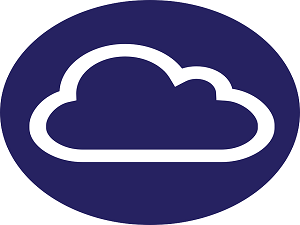The Best Ways To Use MSPs To Access The Cloud
Posted by aonenetworks On July 8, 2014 There are really only two choices when looking to set up a cloud based infrastructure for your company. You can go the direct route, find a cloud provider, add someone or a small team to your IT staff that can learn the ins and outs of your cloud vendor’s API, begin tweaking it to best suit your particular needs, and slowly, iteratively begin a migration to the cloud. That path is expensive, fraught with uncertainty, and messy.
There are really only two choices when looking to set up a cloud based infrastructure for your company. You can go the direct route, find a cloud provider, add someone or a small team to your IT staff that can learn the ins and outs of your cloud vendor’s API, begin tweaking it to best suit your particular needs, and slowly, iteratively begin a migration to the cloud. That path is expensive, fraught with uncertainty, and messy.
The other path is to find a good Managed Service Provider (MSP) who already has connections and relationships with several cloud based vendors, who therefore already has a code team that’s been working with the API and is intimately familiar with it. This means that they can rapidly gain an understanding of your needs and develop a solution to get you migrated to the cloud. That’s a much better solution for a number of reasons, but the two biggest are cost and speed. Simply put, it’s cheaper for you, and it’s faster, because the company you’ve hired to manage the process for you has already traveled the learning curve before you even entered the picture.
Three Main Considerations
Utilizing cloud based resources really comes down to three things. We’ll outline them below and demonstrate how MSP’s can help rid you of two of the three, shedding yourself of two very large headaches, while saving yourself time and money.
Access
If you opt to go it alone, your access strategy is going to have to be the very first thing that your IT team works out for you. You’ll need a safe, secure, reliable way to access your cloud based services by way of however many access points you plan to utilize. That’s more complex than it first appears, because remember, the whole point of the cloud is flexibility, which means that you’re not simply going to be accessing cloud services from the desktop PC’s in your office.
At a minimum, you’re going to want to make those services and functionalities available to your employees when they’re traveling and connecting via their laptops, but even more than that, given the proliferation of hand held devices, that’s got to enter into your thinking as well. To what extent do you want hand held users to be able to access your cloud based resources? This is one of the big headaches that an MSP can eliminate for you, because if they’ve been in the business any time at all, they’ve already got a robust architecture in place to handle all of that.
Security
Access by itself is, or can be, fairly straightforward. Security on the other hand is what makes it tricky. Back in the days when all your access points were localized in a building you controlled, security was more straightforward, but those days are long gone. Besides that, restricting access to just the confines of your physical office defeats a large part of the point and purpose of cloud based resources anyway. This necessitates a robust and well thought out security system that you’ll also have to design on your own if you decide to go solo. Another huge headache taken off your plate by the MSP you chose to work with.
Management
What that leaves you with then, is the relationship management of your MSP, and that’s familiar territory, because while it may be a bit more complex and have a few more moving parts than the kind of vendor management you’re probably more accustomed to, it’s still fundamentally the same thing. Plainly put, it simplifies things for you. You outsource the complexity and focus on managing the relationship. That’s a big win for you.
Whether you pursue cloud services yourself or go through an MSP, it’s always a good idea to talk to an expert first.





